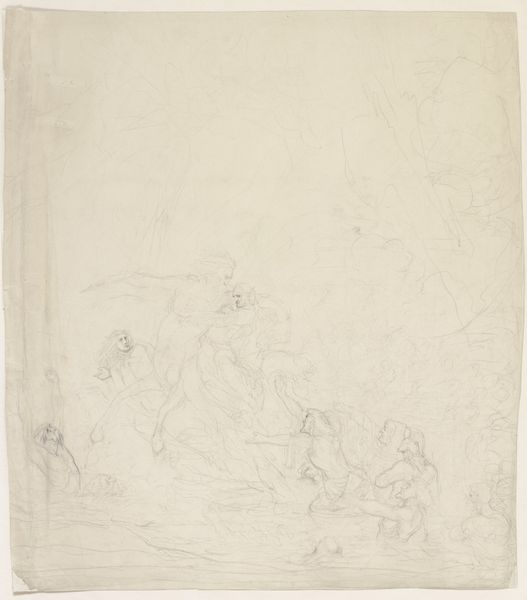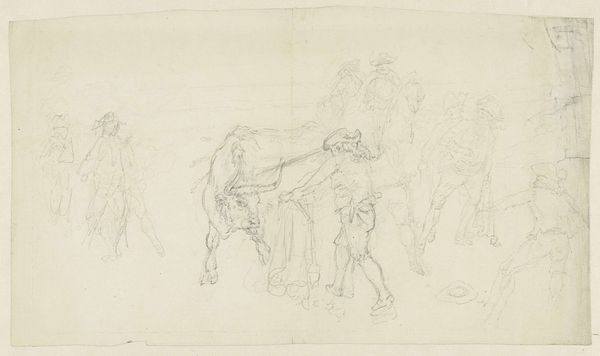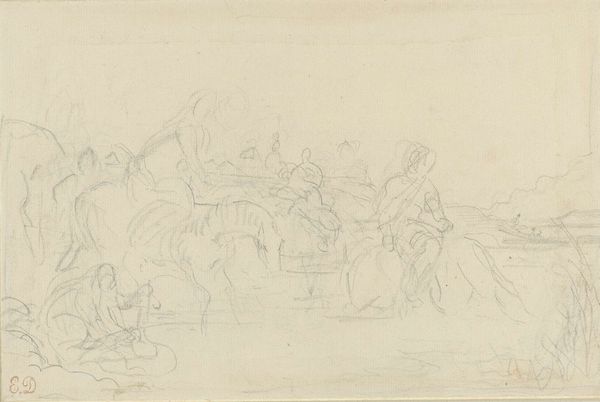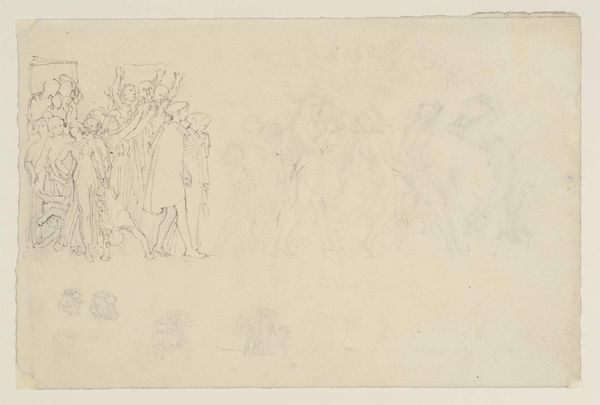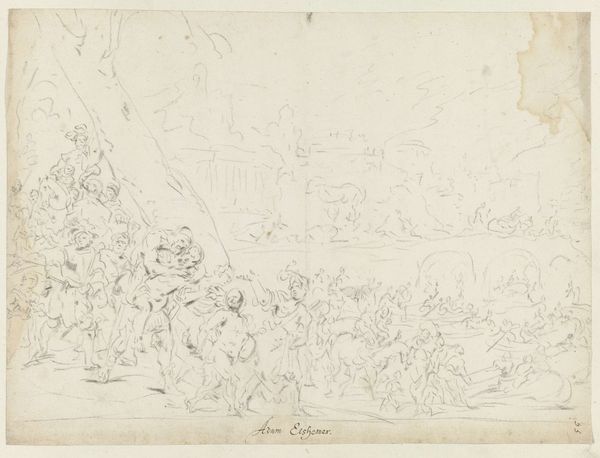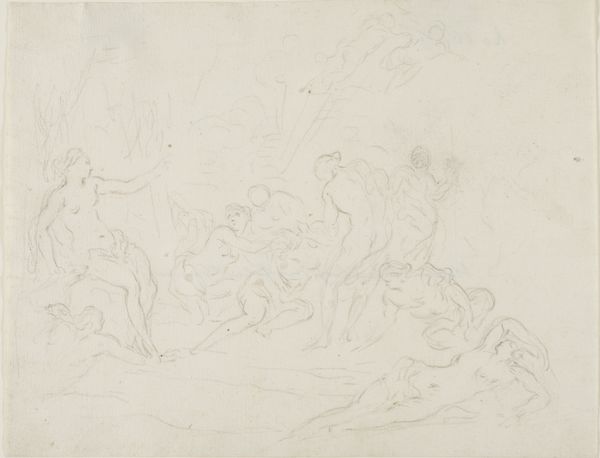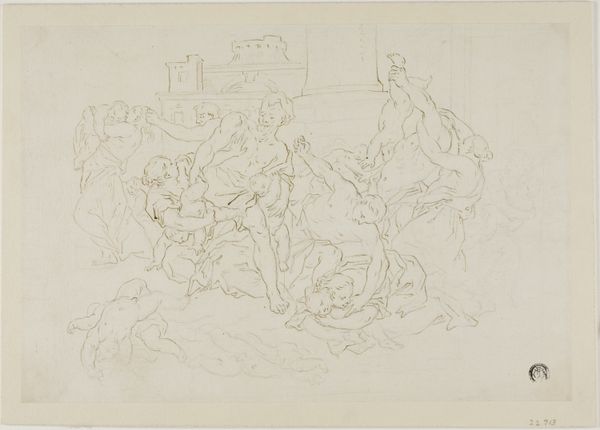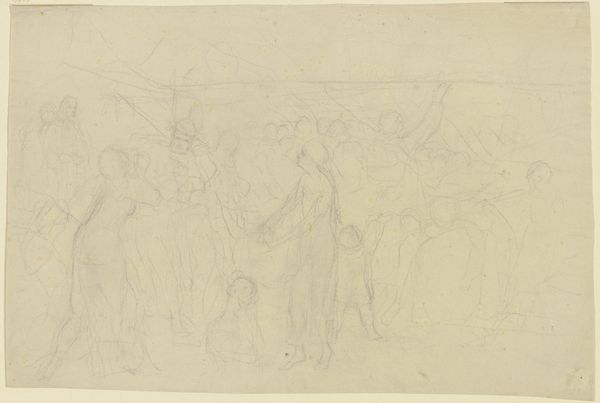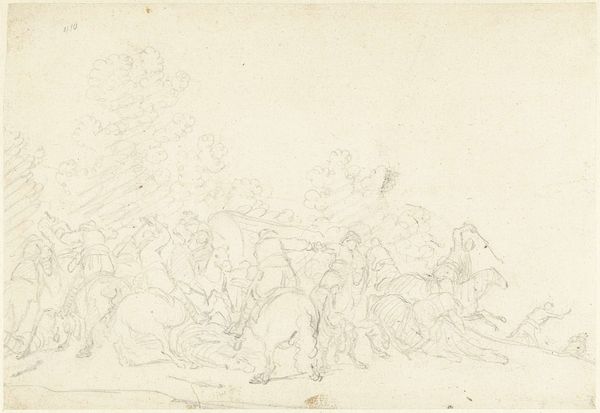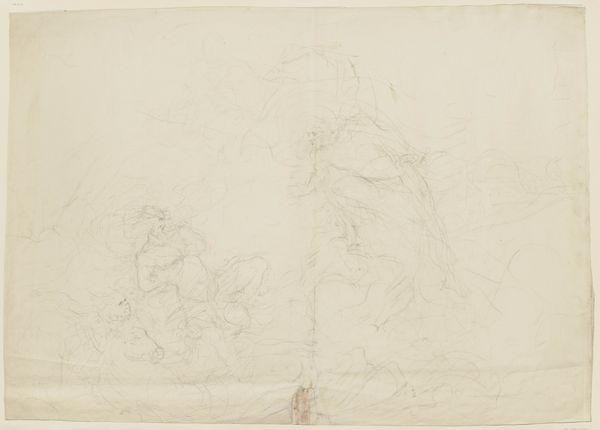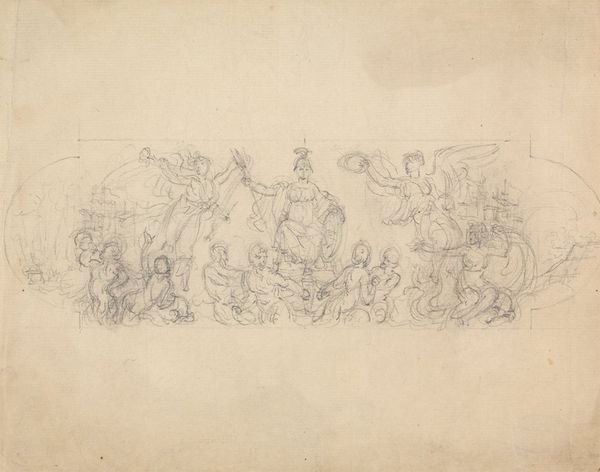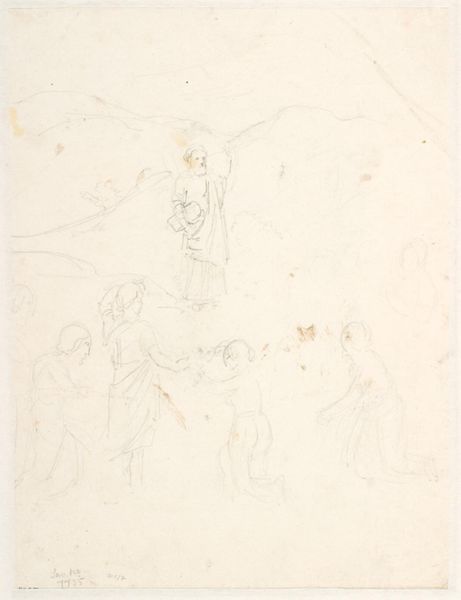
drawing, paper, pencil
#
drawing
#
ink paper printed
#
incomplete sketchy
#
landscape
#
white palette
#
figuration
#
paper
#
pencil
#
line
Dimensions: height 306 mm, width 386 mm
Copyright: Rijks Museum: Open Domain
Curator: This delicate pencil drawing, "Oversteek van de Rijn, 1672," was rendered on paper between 1900 and 1903 by the fr\u00e8res Moreau. Editor: Immediately, I’m getting a sense of unfinished business. There’s something ephemeral about it, like a half-remembered dream, figures emerging from a misty battle scene or landscape... I am getting serious landscape vibes too. Curator: The incomplete, sketchy nature absolutely contributes to that. It invites speculation – what were the artists intending to emphasize? Considering its subject, the historical crossing of the Rhine River, the incompletion raises interesting questions about historical narratives and the representation of power. Whose stories get fully told, and whose remain unfinished sketches? Editor: That's profound. And it brings to mind this stark white space—maybe they didn't want the horror completely visualized? Curator: Precisely! It opens up avenues for interpretation through a feminist lens. How do we reclaim and reimagine historical events by acknowledging these absences and silences, resisting a totalizing patriarchal narrative? What remains untold? Editor: It's interesting how something so muted in color, almost ghostly, can shout so loudly. I’m thinking of resistance to history; that incompleteness says more about power. This work—or maybe I should call it “anti-work” because of its "non finito" vibe—provokes so much introspection. What do you think about the choice of this medium? It looks as if it's paper, pencil, and ink all together. Curator: Yes, I'd agree about the combination of pencil and ink on paper. Given its depiction of warfare and transit, consider the political implications of using drawing and pencil, given how these materials can be so impermanent, erasable. Editor: What remains is more of an impression, or an expression. Well, this conversation has been way more interesting than staring silently at a wispy historical scene. It’s liberating to know we're shaping the conversation too. Curator: Absolutely. It underscores how art, even in its most preliminary form, can function as a powerful lens through which to critique and rewrite dominant narratives, opening pathways for new understandings and imaginings of history.
Comments
No comments
Be the first to comment and join the conversation on the ultimate creative platform.
